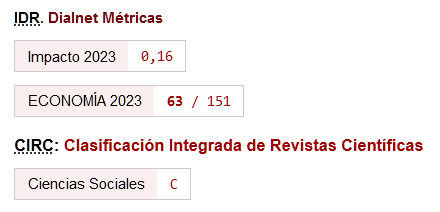Unfolding Analysis of Work Conditions Affecting Employees' Health According to their Positions in the Area of Solid Waste //
DOI:
https://doi.org/10.46661/revmetodoscuanteconempresa.2238Keywords:
Unfolding, risk prevention, solid waste industry, unfolding, prevención de riesgos, industria de residuos sólidosAbstract
Due to the peculiarities of the tasks performed, the area of Municipal Solid Waste (MSW) has a long tradition in implementing risk prevention plans. But are these plans equally received by workers involved in the production chain? This research explores the concerns and worries of MSW sector employees in the Southern Spanish region of Andalusia; it deals with aspects of their work that may affect their health and that can be directly related to the plans and programs designed for the prevention of occupational hazards applied by their companies. The study is conducted through the multivariate statistical unfolding model and the graphic sets it generates. Perceptual maps are analyzed from a representative sample of household MSW workers doing business in Andalusia. The variables studied correspond to 18 work-related issues that can affect their health, such as lighting, body posture and positioning, physical exertion, noise and exposure to toxic substances. The aim is to create a map with all these aspects and employees' positions held in the company so that, through their interpretation, differences in perceptions on issues related to safety at work can be identified depending on their jobs. The study carried out demonstrates that both senior and middle managers are highly concerned and involved in prevention plans.
Downloads
References
Coombs, C.H. (1964). A Theory of Data. New York: Wiley.
Coombs, C.H.; Kao, R.C. (1960). On a connection between factor analysis and multidimensional unfolding. Psychometrika, 25, 219-231.
Cox, T.F.; Cox, M.A. (2001). Multidimensional Scaling. Second edition. Boca Raton: Chapmand and Hall CRC.
De Soete, G.; Heiser, W.J. (1993). A latent class unfolding model for analyzing single stimulus preference ratings. Psychometrika, 58, 3231-3244.
Instituto Andaluz de Prevención de Riesgos Laborales (2008). I Encuesta andaluza de condiciones de trabajo. Sevilla: Consejería de Empleo, Junta de Andalucía.
Instituto Andaluz de Prevención de Riesgos Laborales (2011). Condiciones de trabajo y gestión preventiva en las empresas de residuos sólidos urbanos en Andalucía. Córdoba: Consejería de Empleo, Junta de Andalucía [in Spanish].
Rooij, M.; Heiser, W.J. (2005). Graphical representations and odds ratios in a distance association model for the analysis of cross-classified data. Psychometrika, 70, 1-24.
Ross, J., Cliff, N. (1964). A interpoint generalization of the distance model. Psychometrika, 29, 167-176.
Schönemann, P.H. (1970). On metric multidimensional unfolding. Psychometrika, 35, 349-366.
Zinnes, J.L.; Mackay, D.B. (1995). Probabilistic Multidimensional Unfolding: An Anisotropic model for preference ratio Judgments. Journal of Mathematical Psychology, 39, 99-111.
Downloads
Published
How to Cite
Issue
Section
License
Copyright (c) 2015 Revista de Métodos Cuantitativos para la Economía y la Empresa

This work is licensed under a Creative Commons Attribution-ShareAlike 4.0 International License.
Submission of manuscripts implies that the work described has not been published before (except in the form of an abstract or as part of thesis), that it is not under consideration for publication elsewhere and that, in case of acceptance, the authors agree to automatic transfer of the copyright to the Journal for its publication and dissemination. Authors retain the authors' right to use and share the article according to a personal or instutional use or scholarly sharing purposes; in addition, they retain patent, trademark and other intellectual property rights (including research data).
All the articles are published in the Journal under the Creative Commons license CC-BY-SA (Attribution-ShareAlike). It is allowed a commercial use of the work (always including the author attribution) and other derivative works, which must be released under the same license as the original work.
Up to Volume 21, this Journal has been licensing the articles under the Creative Commons license CC-BY-SA 3.0 ES. Starting from Volume 22, the Creative Commons license CC-BY-SA 4.0 is used.










